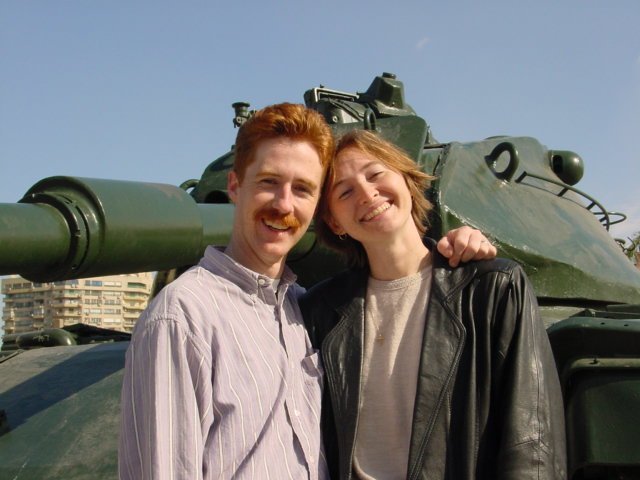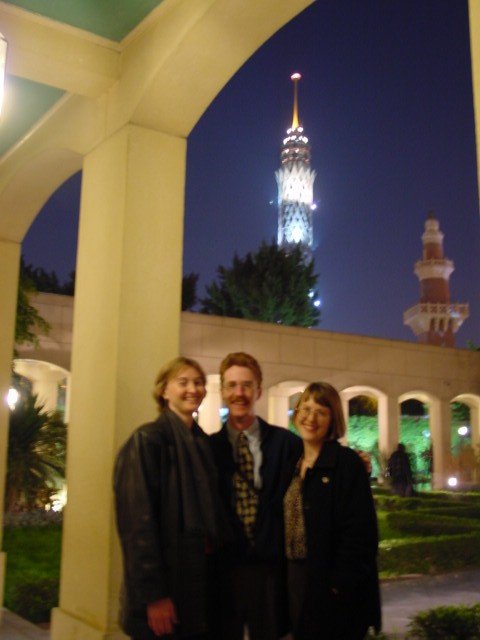December 29, 2001
A holiday photo?
Part of the Panorama.
Today was spent with our friends, but that didn't mean that we didn't get our share of sight-seeing in. Our fist stop in the morning was the October 6, 1973, War Panorama. The 1973 war meant the Egyptian re-capture of the Sinai Peninsula from the Israelis. The battle was depicted in three sections. The first a miniature set, the second like the first, only it glowed in the dark (?), and the third a 360 degree rotating "Panorama," showing all the glory and blood of war. It reminded Marthame of the Civil War Cyclorama in Atlanta's Grant Park. Stunning when we idealize and idolize war like this. Outside, the plaza was decorated with tanks, airplanes, etc. It made us homesick to see war machines in a residential area.
We then stopped by to see the truly strange experience of Snow City - an indoor artificial playground for skiing, snowboarding, and igloo-exploring. Very surreal in the relative heat of Cairo's winter. That'll require a re-visit.
Giza’s pyramids, visible through the smog.
Mosque detail.
In the afternoon, we went up to the Citadel, an old Mamluk structure built on a hill overlooking Cairo's vast 17 million people. The pyramids of Giza were just barely visible in the distance through the thick smog. Just below the Citadel is the "City of the Dead," originally a graveyard that people began to move into as a solution to Cairo's overcrowding and the countryside's poverty. It has been slowly receiving some recognition from the government as worthy of assistance, but brings Cairo into close similarlity with any number of cities where poor farmers come to escape the countryside and end up living in squalid squatter conditions. The Citadel itself, apart from it spectacular view, contains the Mosque of Mohammed Ali (no, not him). He is famous for inviting a large crowd of Mamluks to a banquet at the Citadel, only to slaughter them all as they were leaving. His grave is within the mosque, and is decorated with the six-pointed Star of David - clearly this was designed in the days when the Star (or the Crescent, for that matter) wasn't such a politically-loaded symbol.
Exam snack break at the seminary.
We returned back to the Seminary for a holiday gathering with many of the seminarians. They are in the midst of exams - in Egypt, Christmas is on the Eastern calendar and doesn't come until January 7 - so they welcomed the break with snack food and a little bit of hymn-singing with 'oud accompaniment.
Outside the Cairo Opera House.
We then headed off to Cairo's holiday treat, the double show at the Cairo Opera House. First act was a performance of parts of Tschaikovsky's The Nutcracker Sweet by the Cairo ballet, the rough equivalent of Italian basketball or Texas hockey (most of the leads had oddly Russian-sounding names). The second act was a performance of Layle Kbiire (Big Night), a fast-paced collection of song and dance set in a small Egyptian town around a religiously-neutral holiday. Strong men, belly dancers, and whirling darwishes were all part of the show. The Opera House was packed, and the experience was truly was exhilirating and magical. The two pieces couldn't be more different, but together they were a good representation of how Cairo sees itself - a mixture of East and West.






